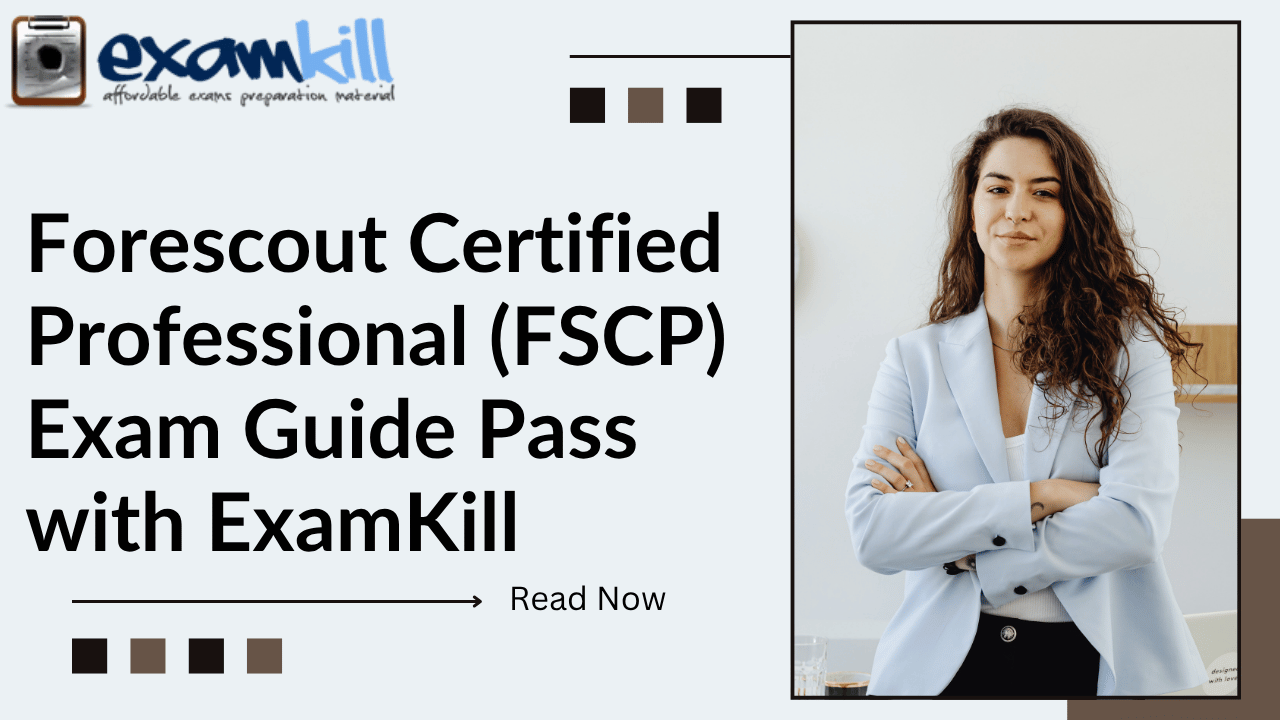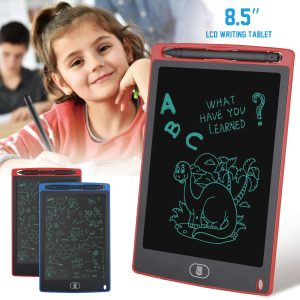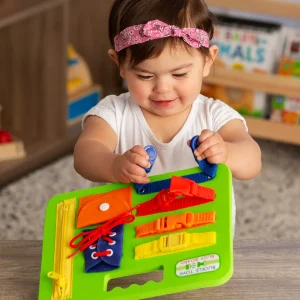Jobs and education
Fun and Easy Ways to Learn New Language for Kids and Adults

Introduction
Learning a new language can feel like stepping into a whole new world. It opens doors to exciting cultures, fresh ideas, and friends from different places. Some people worry that language lessons are boring or too hard, but it does not have to be that way. With the right approach, language learning can be simple, fun, and perfect for all ages. This guide will show you how to get started, stay motivated, and enjoy the journey. We will use easy words, so even kids can follow along. By the end, you will see that mastering a foreign tongue is more about creativity and practice than memorizing endless rules. Ready to explore Ways to Learn a New Language? Let us begin.
Understanding Language Learning

Image by: Yandex.com
Language learning is the process of understanding, speaking, and writing in a language that is not your first. Some people do it for travel, others for work or school. For kids, it might be about having fun with new words. For adults, it might help them talk to people from other countries. No matter the reason, picking up a new language can be a big help in life.
Many think that learning a foreign language means studying thick books or listening to boring tapes. However, there are many fun ways to practice. From singing songs to playing word games, you can find a method that fits your style. By exploring different techniques, you discover what makes you excited to learn more. With a bit of effort and a positive mindset, language lessons become an adventure rather than a chore.
Steps to Start Your Language Journey

Image by: Yandex.com
1. Pick the Right Language
Before you dive in, decide which language you want to learn. Maybe you have friends who speak Spanish, or you love watching anime in Japanese. Choosing a language that interests you is important. It keeps you excited, which helps you stick with your studies. If you are not sure, think about your goals. Do you want to travel to France? Or maybe read manga in Japanese? Your goal guides your choice, making the journey more meaningful.
2. Gather Helpful Tools
There are many ways to practice a language. You can use language apps, online videos, or even library books. Some people prefer in-person classes, while others like group meetups. Pick tools that fit your style. For example, if you like technology, try an app that tracks your progress. If you prefer face-to-face help, look for a local tutor. Having the right tools at hand makes learning smoother and more fun.
3. Set Clear Goals
It is easy to feel lost if you do not have clear targets. Decide what you want to achieve each week or month. Maybe you want to learn 10 new words a day or practice conversation for 15 minutes each evening. These goals keep you focused and help you see progress. They can be small at first, like learning basic greetings or mastering simple sentences. As you improve, raise the bar. Goals keep your motivation high and let you celebrate small wins.
How to Make Language Learning Fun

Image by: Yandex.com
1. Use Songs and Music
Music is a powerful tool for language learning. Listening to songs in your target language helps you pick up new words and phrases. You can sing along, read the lyrics, and discover how the words fit together. This method is great for both kids and adults because it combines fun with learning. When you sing, you practice pronunciation without feeling bored. You might even dance to the beat, making the process lively. Over time, you will notice your vocabulary growing, and you might even hum those tunes during the day.
2. Watch Movies or Cartoons
Another fun approach is to watch movies, TV shows, or cartoons in the language you want to learn. Start with subtitles in your own language, then switch them off when you feel confident. Kids can watch simple cartoons with clear speech, while adults can pick popular series or classic films. This method helps your brain link words to actions and visuals. You see how native speakers talk, which improves your understanding of real conversations. Over time, you will catch on to phrases and jokes, making learning more enjoyable.
3. Play Language Games
Games make learning feel like playtime. You can find word puzzles, quizzes, or card games in your target language. These activities keep your mind active while testing your knowledge. If you have friends or family learning with you, compete to see who can name the most colors or count to 20 the fastest. This friendly challenge adds excitement and helps everyone remember words better. For kids, you might label items around the house in the new language, turning daily routines into mini-lessons. For adults, try crosswords or online word challenges that match your level.
Tips for Practice and Progress

Image by: Yandex.com
1. Consistency Matters
It is better to practice a little every day than to do a lot once a week. Regular practice keeps the language fresh in your mind. Even 10 minutes daily can make a big difference. Whether you review flashcards, read a short article, or listen to a quick podcast, these small efforts add up. Over time, consistent practice leads to big improvements.
2. Find a Language Buddy
Learning is more fun with friends. A language buddy is someone who learns the same language or speaks it natively. You can chat with them in person or online, sharing new words or helping each other with pronunciation. This friendly support keeps you motivated. If you cannot find a buddy in your neighborhood, look online for language exchange platforms. Having someone to talk to in real time helps you practice speaking and listening, which are crucial for fluency.
3. Celebrate Small Wins
Learning a new language can be slow, so celebrate each success. Did you manage to order food in that language without help? That is a win. Could you read a short story and understand it? Another win. By focusing on these small steps, you keep your spirits high. Reward yourself with a treat or share your achievement with family. These positive moments make you eager to keep going. They remind you that every new word or phrase learned is a step closer to your goal.
Challenges in Language Learning
While learning a new language can be exciting, it does come with its challenges. Some people feel shy speaking a new language, worried they might make mistakes. One of the biggest obstacles is consistency. It can be hard to stick to a daily learning routine, especially when you’re busy. Another challenge is staying motivated, especially when progress feels slow. Pronunciation and grammar can also be tricky, particularly when trying to master a language with unfamiliar sounds or complex rules. For kids, it can sometimes be difficult to maintain their attention during Learn New Language lessons. However, with the right approach and consistent practice, these challenges can be overcome.
The Future of Language Learning

Image by: Yandex.com
The future of language learning looks bright, with technology continuing to play a larger role. Virtual reality (VR) and artificial intelligence (AI) are expected to transform how we learn languages. VR technology, for example, can create immersive environments where learners can practice speaking and listening in real-life scenarios. AI-powered apps will offer more personalized lessons based on the learner’s progress. With these advancements, learning a new language will become even more interactive and effective. In the future, language learning may become even more accessible, helping people all around the world become multilingual and connect with others like never before.
Comparative Table: Helpful Language Learning Tools
Below is a table of common language learning tools, what they do, and how they can help kids and adults:
| Tool | What It Does | How It Helps |
|---|---|---|
| Language Apps | Interactive lessons, quizzes, daily goals | Keeps track of progress, easy for all ages |
| Online Tutoring | Live sessions with native speakers | Offers direct feedback, improves speaking |
| Flashcards | Word and phrase practice | Aids memorization, flexible learning |
| Children’s Books | Simple stories with pictures | Ideal for kids, introduces basic vocabulary |
| Podcasts | Audio content in target language | Builds listening skills, suitable for busy people |
These tools cover reading, listening, and speaking, providing a well-rounded approach to language learning.
Conclusion
In summary, learning a new language can be a fun and exciting journey for both kids and adults. By using songs, movies, and language apps, you can turn study time into playtime. Simple steps like setting goals, practicing daily, and celebrating small wins keep you motivated. Whether you choose to learn alone or with a language buddy, consistency and variety are key. Overcoming challenges like shyness or boredom is easier when you focus on enjoyment. With patience and creativity, you can master a foreign tongue and open the door to new friends, cultures, and experiences. Learn New Language Start small, keep it fun, and watch your skills grow each day.
Business
FMCSA-CME Certification Guide Pass the NRCME Exam with Confidence

Introduction
If you are a medical professional who wants to play a key role in road safety and public health then the FMCSA-CME Certification is the right choice for you. This certification allows you to perform Department of Transportation (DOT) physical examinations for commercial drivers. It proves that you understand the Federal Motor Carrier Safety Administration (FMCSA) medical standards and can make correct fitness decisions for drivers. In this complete guide we’ll discuss what the exam is why it’s important who can apply and how ExamKill helps you prepare quickly and confidently.
Click the the link to get latest updates PDF Questions answers material: https://examkill.com/product/fmcsa-cme/
What is the FMCSA-CME Certification?
The FMCSA-CME exam officially called the National Registry Certified Medical Examiner (NRCME) Certification is required for medical professionals who want to be listed on the National Registry of Certified Medical Examiners. It ensures that all medical examiners understand the medical guidelines for commercial motor vehicle (CMV) drivers. Passing this exam confirms that you can correctly determine if a driver is medically fit to operate a vehicle safely. The FMCSA-CME certification process was created to improve highway safety and ensure all drivers meet strict health standards before driving heavy commercial vehicles.
Why Earn the FMCSA-CME Certification?
Getting the FMCSA-CME Certification benefits both your career and the community. Here are some strong reasons to pursue it:
- Professional Recognition: You become part of a qualified group of certified examiners recognized by FMCSA.
- Career Growth: Many clinics and healthcare providers need certified examiners for DOT physicals.
- Public Safety Contribution: You help ensure that commercial drivers meet national medical standards.
- Expanded Knowledge: You’ll learn deeply about FMCSA health regulations and driver wellness.
- Better Opportunities: It can increase your service value and attract more patients to your clinic.
So, if you want to add a respected qualification to your profile this certification is a smart and valuable investment.
Who Can Take the FMCSA-CME Exam?
Not everyone can take this exam. The FMCSA-CME certification is only available for licensed healthcare professionals such as:
- Medical Doctors (MDs)
- Doctors of Osteopathy (DOs)
- Physician Assistants (PAs)
- Advanced Practice Nurses (APNs/NPs)
- Doctors of Chiropractic (DCs)
You must have an active medical license in the U.S. and complete FMCSA approved training before you can register for the NRCME exam.
FMCSA-CME Exam Overview
Here’s a short summary of what you should know about the exam:
- Vendor: Government (FMCSA)
- Exam Name: National Registry Certified Medical Examiner (NRCME)
- Format: Multiple choice questions (computer based)
- Number of Questions: Around 120
- Passing Score: Determined by FMCSA standards
- Duration: Approximately 2 hours
- Topics Covered:
- FMCSA physical qualification standards
- Driver medical history and documentation
- Determining driver fitness for duty
- Use of medical forms and procedures
- Reporting and certification process
The exam tests your ability to apply FMCSA medical guidelines in real world cases.
How to Prepare for the FMCSA-CME Exam
Preparing for the FMCSA-CME requires clear study materials realistic practice questions and regular self testing. You can prepare easily using updated study material from ExamKill. It provides high quality real exam based questions that help you understand the format and content deeply.
What You Get at ExamKill:
- Comprehensive question sets covering all FMCSA topics
- Printable PDF format for flexible study
- Instant download after purchase
- 90 days of free updates for exam changes
- 30 day money back guarantee if you’re not satisfied
With ExamKill you don’t waste time searching for reliable material everything you need is in one place.
Exam Topics You Should Focus On
When studying for the FMCSA-CME exam give attention to these major topics:
- Driver Physical Qualification Standard: Understand all the medical conditions that can affect a driver’s ability.
- Medical History Evaluation: Know how to collect and assess driver health data.
- Vision and Hearing Requirements: Learn the minimum requirements set by FMCSA.
- Cardiovascular and Respiratory Conditions: Understand how these affect driving ability.
- Medication and Substance Use: Be familiar with FMCSA rules about prescription drugs.
- Certification Process and Documentation: Practice completing medical forms correctly.
Reviewing these areas in detail will make your preparation stronger and improve your passing chances.
Why Choose ExamKill for FMCSA-CME Preparation
ExamKill has been helping certification candidates for years. It provides accurate verified and easy to understand materials that make your preparation stress free.
Here’s why thousands of learners prefer ExamKill:
- Real Exam Experience: Practice with authentic FMCSA-CME style questions.
- 30 Days Money Back Guarantee: If you’re not satisfied get a full refund no questions asked.
- 90 Days Free Updates: Stay current with any FMCSA regulation changes.
- User Friendly Material: Simple layout clear answers and quick downloads.
- Proven Success Rate: Many medical professionals passed their FMCSA-CME with ExamKill resources.
You’ll get everything you need to pass confidently without wasting time or effort.
Helpful Tips for FMCSA-CME Exam Success
Here are some practical and easy to follow tips:
- Create a Study Plan: Divide topics by week and stick to a routine.
- Review FMCSA Rules: Understand all driver qualification standards.
- Use Practice Questions: Test your knowledge regularly.
- Stay Updated: Check for changes on the FMCSA website.
- Be Confident: A calm and prepared mind performs better.
Remember success comes from consistent effort and smart preparation.
The FMCSA-CME (NRCME) Certification is your gateway to becoming a qualified Certified Medical Examiner in the U.S. It not only helps your professional growth but also plays a vital part in keeping highways safe. If you’re ready to take the next step prepare using trusted and updated materials from ExamKill. You’ll get instant access 30 days money back guarantee and 90 days of free updates giving you total peace of mind.
Start today and move closer to your goal of becoming a nationally recognized medical examiner!
Sample FMCSA-CME Practice Questions
Question 1: What is the maximum certification period for a driver who meets all FMCSA medical standards?
A) 6 months
B) 1 year
C) 2 years
D) 3 years
Answer: C) 2 years
Question 2: A driver with uncontrolled diabetes mellitus should be:
A) Certified for 1 year
B) Temporarily disqualified
C) Referred for vision testing
D) Automatically approved
Answer: B) Temporarily disqualified
Question 3: Which FMCSA form must be completed for each driver physical?
A) MCSA-5875
B) MCSA-5000
C) DOT-Form-99
D) NRCME-102
Answer: A) MCSA-5875
Using real style questions like these helps you get familiar with the test structure and time management.
Click the the link to get latest updates PDF Questions answers material:
Business
Forescout Certified Professional (FSCP) Exam Guide Pass with ExamKill

Introduction
If you want to build a strong career in network security the Forescout Certified Professional (FSCP) Exam is a great choice. This certification helps you prove your knowledge and skills in using Forescout tools to manage and secure network devices. It shows that you can control monitor and automate security across complex systems.
The FSCP exam is trusted worldwide and is designed by Forescout Technologies a well known company in network access control and security automation. Let’s look at what this exam is why it’s important and how you can prepare for it easily with ExamKill.
Click the the link to get latest updates PDF Questions answers material: https://examkill.com/product/fscp/
What is the FSCP Exam?
The FSCP exam known as the Forescout Certified Professional Exam tests your ability to work with Forescout products. It checks if you can handle device visibility create policies manage security compliance and automate network access. By passing this exam you become a certified professional who can work with Forescout’s CounterACT and related tools. It proves that you are skilled in identifying and securing devices connected to a network which is one of the most important skills in cybersecurity today.
Why Earn the FSCP Certification?
Getting the FSCP certification can boost your career in several ways. It not only builds your technical skills but also makes you stand out in the job market. Here are some simple reasons why this certification is worth it:
- You gain strong knowledge of Forescout systems and tools.
- It improves your credibility in front of employers.
- You can apply for better and higher paying IT security jobs.
- You stay updated with modern security practices and automation.
When you add FSCP to your resume it shows that you have real world knowledge and can manage network devices efficiently.
Who Should Take the FSCP Exam?
The FSCP exam is suitable for IT and security professionals who work in environments that require device monitoring policy control and automation. You should consider this exam if you are:
- A Network Administrator
- A Security Engineer
- A System Administrator
- An IT Professional responsible for network access control
If you manage network visibility or help protect devices from threats this exam is a perfect match for you.
How to Prepare for the FSCP Exam
Preparing for the Forescout Certified Professional Exam is simple if you follow a proper plan. Here are a few easy steps to help you prepare effectively:
- Understand the exam topics: Go through the main areas like device classification CounterACT setup and network automation.
- Practice with Forescout tools: Use Forescout CounterACT in a lab environment to get hands on experience. Practical learning makes a big difference.
- Use verified study material from ExamKill: Visit ExamKill’s FSCP page to get real and updated exam dumps. These materials are created by professionals and help you understand how the real exam works.
- Create a study schedule: Divide your time wisely and cover each topic step by step. Don’t rush through everything at once.
- Take practice tests: Practice exams help you know your weak areas and improve your confidence.
Why Choose ExamKill for Your FSCP Preparation?
ExamKill is one of the most trusted platforms for exam preparation. Many professionals choose ExamKill because it provides real and verified study materials that are regularly updated.
Here’s why you should use ExamKill for your FSCP exam:
- Real and Updated Questions: ExamKill offers accurate and verified exam dumps that are similar to the actual FSCP exam questions. This helps you get familiar with the exam pattern before your test day.
- 30 Days Money Back Guarantee: If you fail your exam or are not satisfied ExamKill gives you a 30 day money back guarantee. It’s completely risk free.
- 90 Days Free Updates: You’ll get free updates for 90 days after purchase. So if any changes happen in the FSCP exam you’ll automatically receive the new content.
- Easy and Instant Download: You can download the FSCP dumps immediately and start preparing without waiting.
- Customer Support: ExamKill has a friendly support team ready to assist you anytime you face an issue or need help.
FSCP Exam Format
Here is a simple overview of what you can expect in the FSCP exam:
- Exam Name: Forescout Certified Professional (FSCP)
- Vendor: Forescout Technologies
- Number of Questions: Around 60-70
- Type: Multiple Choice Questions
- Time Limit: About 90 minutes
- Passing Score: Around 70%
- Language: English
It’s always a good idea to check the official Forescout website for the latest updates before you register.
Tips to Pass the FSCP Exam
Here are a few easy tips that can help you pass your exam on the first try:
- Focus on understanding the core features of Forescout CounterACT.
- Study regularly instead of cramming everything at the end.
- Use real exam questions from ExamKill for practice.
- Read every question carefully during the exam.
- Stay calm and confident on exam day.
If you follow these simple steps you can easily achieve success in your FSCP certification.
Career Benefits After Passing the FSCP Exam
After passing the FSCP exam you can open doors to many new opportunities in your IT career. You can apply for jobs such as:
- Network Security Engineer
- Forescout Administrator
- IT Security Analyst
- System Security Specialist
This certification helps you move up in your career and shows that you can manage real world security systems effectively.
The Forescout Certified Professional (FSCP) exam is one of the best ways to grow your IT security career. It builds your technical skills proves your expertise and helps you reach better job opportunities. With ExamKill your success becomes easier. You get verified FSCP exam dumps a 30 day money back guarantee and 90 days of free updates everything you need to pass confidently.
So start your preparation today with ExamKill’s FSCP page and take your first step toward becoming a certified Forescout professional.
Click the the link to get latest updates PDF Questions answers material:
Jobs and education
Boost Early Learning with Zipper Toys, LCD Tablets, and Buckle Boards

Introduction
As parents and educators, we are always on the lookout for ways to support early childhood development. In today’s tech-driven world, interactive learning tools are becoming essential in engaging young minds. Whether it’s through physical activities or screen-based play, these tools offer a fun and educational experience that helps children develop crucial cognitive, motor, and social skills. Among the most popular interactive learning tools are zipper toys, LCD drawing tablets, and buckle boards, all designed to nurture creativity, hand-eye coordination, and problem-solving abilities.
In this article, we will explore how these interactive tools contribute to early childhood development, their benefits, and how they can be used to enhance learning experiences for young children.
Zipper Toys: Fun with Fine Motor Skills

Image by: Yandex.com
Zipper toys are simple yet effective tools that are often overlooked in the world of interactive learning. These toys typically feature various zippers, buttons, snaps, and other fasteners that children can manipulate. At first glance, zipper toys may seem like just a fun plaything, but they provide invaluable benefits for early childhood development.
1. Enhancing Fine Motor Skills
One of the key advantages of zipper toys is their ability to improve fine motor skills. Manipulating zippers and buttons requires children to use their fingers and hands in precise ways, which helps strengthen hand muscles and improve coordination. As children repeatedly zip and unzip, they develop the dexterity needed for other tasks like holding a pencil or tying their shoes.
2. Building Patience and Focus
Zipper toys also teach children the importance of patience. At first, manipulating the zippers and fasteners may be a challenge, but as children practice, they develop the persistence needed to solve the problem. Over time, they gain confidence in their abilities and learn the value of persistence, a skill that will serve them well in all areas of life.
3. Promoting Independent Play
These toys encourage independent play, which is essential for fostering a sense of autonomy in children. As children figure out how to operate the zippers on their own, they develop a sense of accomplishment. This builds self-esteem and encourages them to explore and experiment independently.
LCD Drawing Tablets: Merging Creativity and Technology

Image by: Yandex.com
In today’s digital age, screen-based tools can play a positive role in early childhood development. One such tool is the LCD drawing tablet, a versatile gadget that allows children to create art without the mess of traditional markers and crayons. These tablets are designed with a screen that can be written or drawn on using a stylus, and with the press of a button, the drawing disappears, making room for endless creativity.
1. Encouraging Creativity and Expression
LCD drawing tablets are an excellent way to encourage creativity in young children. Whether they are doodling, practicing letters, or creating colorful designs, children can express themselves in a way that is both fun and educational. This fosters imagination and allows children to explore their artistic abilities in a low-pressure environment.
2. Learning through Drawing
Beyond creativity, these tablets can also serve as an educational tool. Children can use them to practice letters, numbers, shapes, and even basic math problems. For example, educators and parents can draw shapes or letters on the tablet, allowing children to trace over them and practice their skills. This combination of learning and creativity makes LCD tablets a fantastic tool for reinforcing essential early childhood skills.
3. Environmentally Friendly
One of the added benefits of LCD drawing tablets is their environmental impact. Since they are reusable, children can draw, erase, and start again without wasting paper. This makes the tablets not only an educational tool but also a sustainable one, promoting eco-friendly habits at an early age.
Buckle Boards: Building Problem-Solving Skills

Image by: Yandex.com
Buckle boards are another fantastic interactive learning tool designed to enhance early childhood development. These boards feature a variety of buckles, clasps, and latches that children can manipulate. Like zipper toys, buckle boards help children practice important fine motor skills, but they also introduce an element of problem-solving and critical thinking.
1. Improving Hand-Eye Coordination
Just like zipper toys, buckle boards help children develop their hand-eye coordination by encouraging them to figure out how to fasten and unfasten different types of closures. Each buckle or clasp presents a unique challenge, requiring the child to focus and use their hands in specific ways. This level of interaction is crucial for the development of coordination and dexterity.
2. Enhancing Cognitive Skills
Buckle boards also play an important role in enhancing cognitive skills. As children experiment with different closures, they start to recognize patterns, shapes, and colors. They also begin to understand cause-and-effect relationships—if they press this button, the buckle will release, or if they turn this knob, the latch will open. This hands-on exploration helps children develop problem-solving skills, which are essential for their cognitive growth.
3. Promoting Independence
Like zipper toys, buckle boards also promote independence. As children successfully manipulate the buckles and latches on their own, they gain a sense of accomplishment. This helps boost their confidence and reinforces the idea that they are capable of solving problems on their own, a mindset that is essential for lifelong learning.
How Interactive Learning Tools Impact Early Childhood Development
Interactive learning tools like zipper toys, LCD drawing tablets, and buckle boards provide more than just entertainment—they are powerful tools for early childhood development. Here are some of the key benefits these tools offer:
1. Cognitive Development
These tools engage children’s brains by encouraging them to think, problem-solve, and explore different possibilities. Whether they are figuring out how to zip a zipper, draw a picture, or unlock a buckle, children are constantly using their minds to process information and develop new skills.
2. Physical Development
Manipulating the various components of zipper toys, buckle boards, and drawing tablets helps children improve their fine motor skills and hand-eye coordination. These activities strengthen the muscles in their hands and fingers, preparing them for more complex tasks like writing, drawing, and even typing.
3. Emotional Development
Interactive learning tools can also help children develop emotional intelligence. When children solve a problem, such as completing a zipper or finishing a drawing, they experience a sense of achievement. This boosts their self-confidence and fosters a positive attitude toward learning.
4. Social Development
Although these tools are often used for solo play, they also provide opportunities for social interaction. Parents, caregivers, and peers can engage with children during playtime, guiding them through tasks and offering encouragement. This helps children develop social and communication skills as they interact with others and share their accomplishments.
Conclusion
Interactive learning tools like zipper toys, LCD drawing tablets, and buckle boards are not only fun but also essential for promoting early childhood development. These tools foster creativity, improve fine motor skills, and encourage independent thinking—all while providing children with valuable opportunities to explore and learn.
By integrating these tools into a child’s learning environment, parents and educators can give children a solid foundation for future academic and social success. The benefits are clear: these tools help children develop cognitive, physical, emotional, and social skills that will serve them throughout their lives.
As children grow, the importance of hands-on learning tools continues to increase. Interactive toys and gadgets are not just entertaining; they are vital in shaping the future of young minds. With the right resources, we can ensure that every child has the opportunity to explore, grow, and thrive.
-
Business2 years ago
Cybersecurity Consulting Company SequelNet Provides Critical IT Support Services to Medical Billing Firm, Medical Optimum
-
Business2 years ago
Team Communication Software Transforms Operations at Finance Innovate
-
Business2 years ago
Project Management Tool Transforms Long Island Business
-
Business2 years ago
How Alleviate Poverty Utilized IPPBX’s All-in-One Solution to Transform Lives in New York City
-
health2 years ago
Breast Cancer: The Imperative Role of Mammograms in Screening and Early Detection
-
Sports2 years ago
Unstoppable Collaboration: D.C.’s Citi Open and Silicon Valley Classic Unite to Propel Women’s Tennis to New Heights
-
Art /Entertainment3 years ago
Embracing Renewal: Sizdabedar Celebrations Unite Iranians in New York’s Eisenhower Park
-
Finance3 years ago
The Benefits of Starting a Side Hustle for Financial Freedom






























